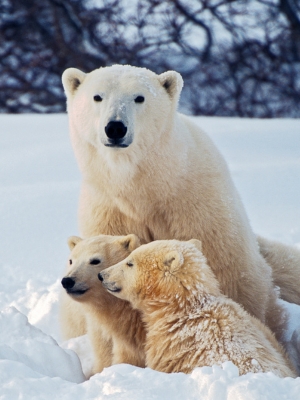There are at least 579 captive giraffe at 103 zoos throughout North America and more than 800 in European zoos, including at least 150 in the U.K. Unlike free-living giraffe, who form complex social relationships, many giraffe in zoos are deprived of this opportunity, and in several cases live alone or with just one other individual.
The International Union for Conservation of Nature (IUCN), which is the leading body on establishing conservation status for free-living animals under threat of extinction, lists giraffe as “Vulnerable.” Populations in the wild are decreasing, with up to 40% loss since 1990. Major threats to giraffe include habitat loss and poaching. It is certainly true that giraffe are under threat in their natural habitat but the question is: are zoos doing anything to help?
It is certainly true that giraffe are under threat in their natural habitat but the question is: are zoos doing anything to help?
The Problems with Captive Breeding
Animals Born in Zoos Die in Zoos
One of the main arguments of the zoo industry is the reason for continually breeding animals for lives in captivity is that they could, theoretically (one day, perhaps, maybe) be released back the wild. Referred to as “insurance populations,” zoos claim that they are saving animals from extinction by keeping species alive. But, the truth is, animals born in zoos die in zoos.
Hybridization
Notwithstanding that an animal born and raised in captivity would be unlikely to have the skills to survive in their natural habitat and would require long-term rehabilitation before standing a chance of life in the wild, data shows that poor management of giraffe breeding programs has resulted in hybridization of animals. As of 2005, the main species of giraffe held captive in zoos were the reticulated and Rothschild’s giraffe. But, when testing was carried out to establish genetic variability between captive and free-living members of the species, it was found that the captive species were hybridized, making them ineligible to be considered viable for “insurance populations.” While clearly a result of mismanagement of captive giraffe, the zoo industry’s solution is to kill those who do not fit the genetic criteria they desire. These innocent animals therefore pay with their lives either way; if they fit the genetic mold, they spend their lives in captivity, if they do not, they are killed as part of accepted “management practice.”
The Difficulty of Introducing Captive-Bred Animals to the Wild
Even if it were not for botched breeding programs, and the difficulties of release, only the West African giraffe has been identified by the IUCN as a species which would benefit from reintroduction efforts. First and foremost, this species is not one commonly kept by zoos as part of the industry’s “insurance population” but the only example of reintroduction achieved to date has been carried out via translocation of wild giraffe within Niger, Africa, and not from zoos.
Animals Are Held in Zoos for Display, Not Conservation
What is clear from the data available is that giraffe are not held in zoos for conservation purposes, but for display. This was confirmed by the EEP (the European equivalent of the AZA SSP) in 2006 that “As no zoo board will accept an empty giraffe enclosure, the short-term goal is to keep the existing facilities filled with giraffe.”
We know that giraffe suffer in captivity and even the zoo industry confirms that its goal is to stock its exhibits. Conservation experts agree that reintroduction is neither viable nor desirable. This leads to one logical conclusion: it is time to end the giraffe captivity.
Keep Wildlife in the Wild,
Liz

 Dear Reader,
Dear Reader,